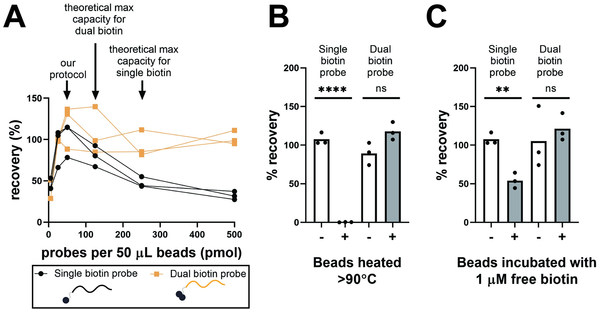DNA probe hybridization is a remarkably significant technique in molecular biology that underpins various fields, such as genetics, diagnostics, and even environmental science. This method utilizes the fundamental property of DNA to bond specifically with its complementary sequence, thereby allowing researchers to identify and quantify specific nucleic acid sequences from complex samples. What does this mean for individuals concerned about environmental issues? How might we leverage this powerful technique to understand the impact of climate change on biodiversity?
In an era characterized by rampant environmental degradation, understanding genetic diversity becomes crucial. The potential to track genetic variations among species can inform conservation efforts. DNA hybridization plays a pivotal role in this quest. By employing DNA probes—short, labeled fragments of nucleic acids that can bind to specific target sequences—scientists can identify endangered species, track genetic mutations, and investigate how populations are adapting (or failing to adapt) to rapidly changing climates.
At the core of DNA hybridization lies base complementarity. Adenine pairs with thymine, while cytosine pairs with guanine. This specific binding ensures that probes will only hybridize with their intended sequences, facilitating accurate identification. When researchers wish to locate a specific gene or sequence within a complex genetic tapestry, they can employ labeled probes to highlight these regions. The consequences of this technique are profound; it can pinpoint genetic markers associated with resilience to environmental stressors like pollution or temperature fluctuations.
Implementing DNA probe hybridization in ecological studies invites a critical question: can we proactively safeguard biodiversity by understanding species’ genetic adaptability through hybridization techniques? This query opens the door to myriad possibilities, but challenges abound. For instance, how do we ensure that the methodologies employed do not inadvertently introduce biases or misinterpretations in genetic data?
One significant application of DNA hybridization is the monitoring of biodiversity in changing ecosystems. For example, through environmental DNA (eDNA) sampling, researchers gather genetic material shed by organisms into the environment—such as skin cells, feces, or secretions. By analyzing these samples using hybridization techniques, scientists can infer species presence and abundance without the need for physical capture. This is particularly valuable in aquatic environments where many species are elusive and difficult to survey. As climate change exacerbates habitat loss, such methodologies could prove invaluable for tracking shifts in species distributions, guiding conservation priorities, and managing natural resources.
While the benefits are substantial, the challenge remains: can these techniques keep up with the rapid pace of environmental change? The robustness of hybridization methods must be assessed under diverse conditions since environmental stressors may affect the genetic integrity of organisms. Are we prepared for potential consequences if specific genetic variants critical to survival are lost in the inexorable march of climate-induced challenges?
Moreover, it’s essential to consider the ethical implications of utilizing such powerful techniques in genetic studies. As we unravel the mysteries of life at a molecular level, we must contend with questions surrounding genetic manipulation and the potential for unforeseen consequences. If we can discern which genetic markers confer resilience to climate change, do we possess the moral imperative to intervene in natural selection processes? This debate underscores the intricacies involved in genetic research and its ramifications for conservation.
Furthermore, the technology related to DNA probe hybridization is ever-evolving. Advances in sequencing technologies and computational methods enhance the precision and efficiency of hybridization assays. This enhances our capabilities for large-scale biodiversity assessments, allowing for a more profound understanding of population genetics. However, with each technological leap comes increased responsibility. As practitioners wield these powerful tools, they must also contemplate the balance between advancement and conservation. Could reliance on certain biotechnologies lead to oversight of traditional ecological knowledge? After all, the field of ecology thrives on multifaceted approaches that marry modern science with age-old wisdom.
Another noteworthy aspect of DNA hybridization is its role in public health and epidemiology, particularly in assessing the impacts of climate change on pathogen dynamics. Climate fluctuations can influence the distribution of vectors that transmit diseases, and understanding the genetic diversity of pathogens themselves is critical. By examining the genetic material of these organisms, researchers can gain insights into their potential for adaptation and virulence—considerations that are increasingly relevant as global temperatures rise. As more pathogens emerge under changing conditions, hybridization techniques may provide fortifying data that can inform public health interventions and strategies.
In summary, DNA probe hybridization is a formidable tool in our arsenal to combat climate change and its ramifications. From tracking genetic adaptations in biodiversity to offering insights into pathogen dynamics, this technique opens avenues for improved conservation and public health strategies. However, as we harness its capabilities, the challenges must not be overlooked. Rapid environmental changes demand our attention, and the ethical considerations surrounding genetic research remain paramount. To navigate this intricate landscape, interdisciplinary collaboration among molecular biologists, ecologists, and ethicists will be essential. Ultimately, our capacity to safeguard biodiversity in the face of climate change hinges upon our ability to harness and wield this powerful technology responsibly.
